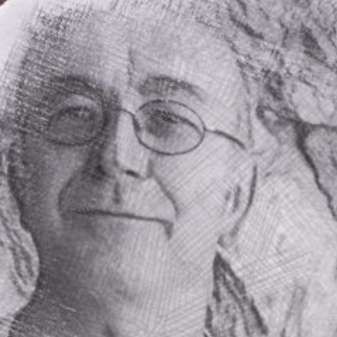Violist Lawrence Power, appropriately enough, produces a powerful, beautiful sound. Many public speakers would envy his musical charisma; when he begins a phrase you simply have to hear how it ends. His appearance as guest of the Scottish Ensemble saw him as joint soloist in two works and soloist proper in another.
Pastoral Fantasia (1939) by William Alwyn (1905-1985) saw Power centre-stage, in a gently rhapsodic work which felt the epitome of Englishness. As the title suggests, the piece features soaring, folkloric passages – many employing pentatonic melodies – and the immediacy of Power's articulate performance might have led many to believe that the piece was not merely improvisatory but improvised. This instantly accessible work was flecked with odd harmonic nuggets, hinting at a more dynamic sensibility and I wasn't completely surprised to discover, in later research, that Alwyn's Symphony no. 3 features his own take on twelve-tone music.
A more obviously contemporary sound characterised Luke Bedford's imaginatively titled Wonderful Two-Headed Nightingale. Commissioned by the Scottish Ensemble, it had received its world première a few nights earlier. Although composition preceded titling, it was fascinating to discover that Two-Headed Nightingale was the stage name of Millie and Christine McCoy – singing, conjoined twins, who were born into slavery in North Carolina in 1851, sold to a showman, and then kidnapped by a rival showman. They ended their lives in the UK, where slavery had long been outlawed.
Essentially a single-movement mini-concerto for violin and viola, this piece featured many dense, dramatic chords, some incorporating palette-widening quarter-tones. Such moments contrasted very effectively with the initial bright, open string chords played by the two soloists, Lawrence Power and Scottish Ensemble director Jonathan Morton. These two players complemented one another very well. The dramatic tension in this piece derives from two solo lines which follow equal mindsets: striving to break free from the other; reunited and more happily resigned to the status of being a twin. Currently the Wigmore Hall's first ever Composer in Residence, Bedford strikes me as having a distinctive voice and I look forward to hearing more of his work.
Written for forces identical to the Bedford (12 strings, 2 horns, 2 oboes and soloists), Mozart's Sinfonia Concertante in E flat, K364 again featured Power and Morton. Rapport was even more impressive in this case, particularly in those moments where the accompanying instruments are silent. Their playing seemed almost telepathic and was completely free of the watchful caution which can characterise such unmeasured moments. The tender and passionate central Andante was beautifully paced and the closing Rondo was delivered with more brio than I can recall hearing.
It is often difficult to pinpoint exactly when and how one's musical preferences change. However, I will be able to recall this as the evening when it really struck me that large symphony orchestra performances of Haydn symphonies seem like sleeping giants that should remain asleep. The Scottish Ensemble's performance of Haydn's Symphony no. 44 in E minor ('Trauer') was absolutely brimming with life. There is less irony in that statement than meets the eye; the subtitle, 'Trauer' ('Mourning') was added late in Haydn's life, when he expressed his desire that the serene, unsentimental Andante be played at his funeral. In the Queen's Hall, the dynamic range felt huge for a 17-strong chamber orchestra and the clarity and wide-awake articulation were just the tonic for a Scottish, Sunday winter's evening. Almost as enjoyable as the music was the communication between the players: between desk partners, between sections and between director and orchestra members. These are musicians who clearly love working together as much as they love the repertoire which they so joyously deliver.


